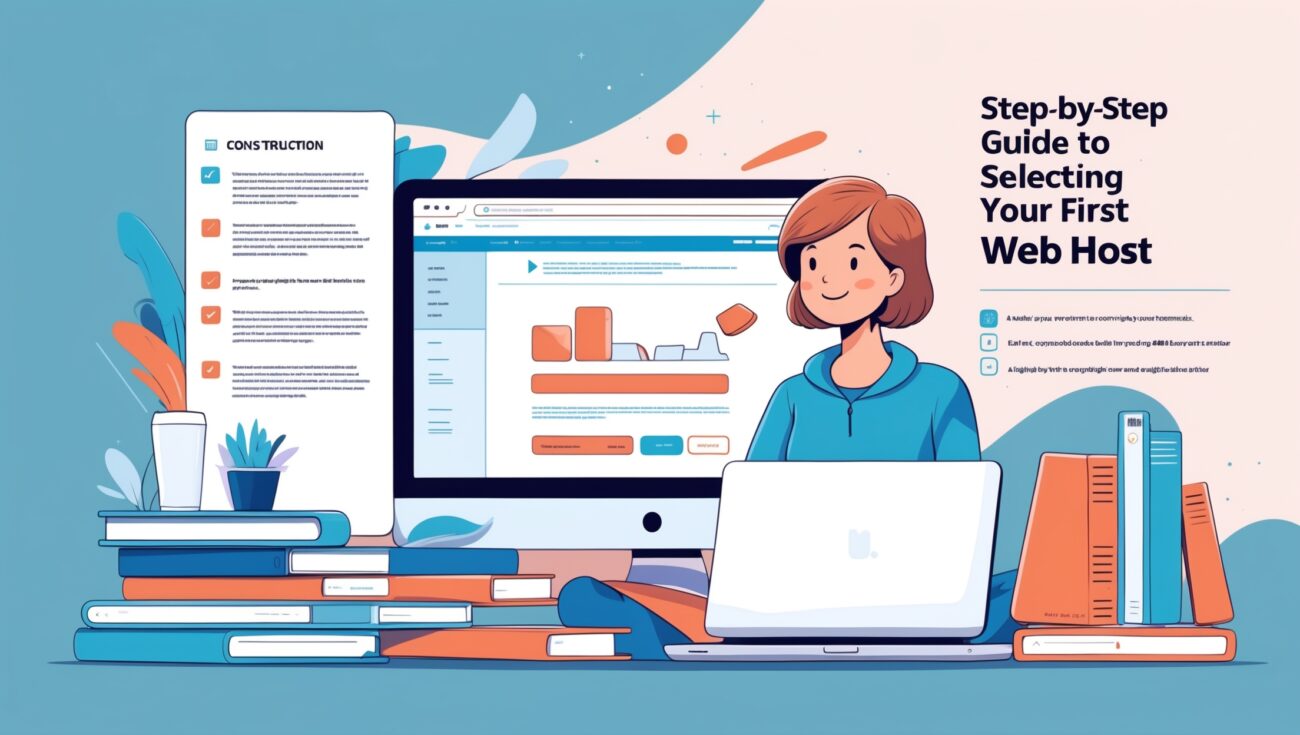Step-by-Step Guide to Selecting Your First Web Host
Choosing your first web host can be overwhelming, but this step-by-step guide simplifies it. Learn how I picked my hosting, what to look for, and why I recommend SiteGround.

Table of Contents
Starting a website can feel exciting and overwhelming at the same time. When I first decided to launch my blog, I spent hours searching for the perfect web hosting provider, and I quickly realized that picking the right host is critical for your website’s success. In this guide, I’ll share my personal experience and break down the steps I took to choose my first web host.
Why Choosing the Right Web Host Matters
When I started, I didn’t realize how much impact a reliable web host has on site speed, security, and overall performance. A poor host can lead to slow loading times, frequent downtime, and frustrated visitors. On the other hand, a dependable host ensures your website runs smoothly and gives you peace of mind.
For me, that host turned out to be SiteGround, and I’ll explain why below.
Step 1: Identify Your Website Needs
Before I chose a host, I had to ask myself a few questions:
- Will I be running a simple blog or a large e-commerce site?
- How much traffic do I expect initially?
- Do I need advanced security features or extra speed?
Answering these questions helped me understand whether I needed shared hosting, cloud hosting, or a dedicated server. For most beginners, shared hosting is enough, and it’s also the most affordable.
Step 2: Look for Reliability and Uptime
I quickly learned that uptime is crucial. Imagine visiting a site only to see it’s down—frustrating, right? I chose SiteGround because they offer 99.99% uptime, ensuring my site is always accessible. Reliability should always be a top priority when selecting a web host.
Step 3: Evaluate Speed and Performance
Nobody wants a slow website. I tested several hosts and found that a fast server response time greatly improved my user experience. SiteGround’s servers consistently provided excellent speed, which also helped my SEO rankings.
Step 4: Check Security Features
Security is another key factor I focused on. I wanted a host that offered free SSL certificates, daily backups, and proactive monitoring. SiteGround provided all of this, which gave me confidence my site would be safe from attacks.
Step 5: Consider Customer Support
When I was starting, I had tons of questions about hosting and WordPress setup. I needed a provider with reliable 24/7 customer support. SiteGround’s support team was always quick, helpful, and patient, which made the setup process stress-free.
Step 6: Compare Pricing and Plans
While cost isn’t everything, I wanted hosting that offered great value. SiteGround’s plans were affordable for beginners, and the features included were perfect for my needs. Remember, cheap hosting isn’t always better—sometimes it comes with hidden costs or poor performance.
Step 7: Make the Switch to Your Host
After comparing features, speed, security, and support, I finally made my decision. I signed up for my plan through SiteGround, and the setup was simple and fast. Within minutes, my site was ready to go live.
My Personal Advice
Choosing your first web hosting provider can feel overwhelming, but if you take it step by step, it becomes much easier. Focus on reliability, speed, security, and support. For me, SiteGround checked all the boxes, and I can confidently recommend them to anyone starting a website.
If you’re ready to launch your site without the stress, you can start your journey here: Get SiteGround Hosting.
Choosing the right hosting plan doesn’t just affect speed and uptime; it also influences your website’s growth potential. I remember when I first underestimated this, thinking any host would do. The right plan ensures you can scale your site as your traffic grows without unnecessary interruptions.
I also learned that having daily backups is a lifesaver. Accidents happen, and without a solid backup system, you could lose months of work. SiteGround automatically backs up my website daily, which gives me peace of mind.
One feature I didn’t initially consider was server location. I wanted my website to load quickly for my primary audience. By choosing a host with data centers near my visitors, I noticed a significant improvement in site speed.
Security is more than just SSL certificates. I found that firewalls, AI-based threat detection, and proactive monitoring can prevent most attacks before they even reach your website. SiteGround includes all of this, which makes it much easier to focus on content rather than technical problems.
Customer support is not just about solving problems; it’s about guidance. When I had questions about optimizing my website or installing plugins, SiteGround’s team provided step-by-step advice that saved me hours of frustration.
I also discovered that a user-friendly control panel makes a huge difference. Being able to manage domains, emails, and databases in one place simplified everything for me. It’s one of those small things that makes hosting much less intimidating for beginners.
Email hosting was another feature I valued. Being able to create professional email addresses linked to my domain gave my website a more credible appearance. SiteGround includes this feature, which saved me from buying additional services.
Speed optimization tools built into hosting can improve user experience dramatically. SiteGround provides caching and performance plugins that made my website noticeably faster without me having to be an expert.
I initially overlooked traffic limits. Even if your site is small, unexpected surges can happen. Hosting that allows for flexible traffic management prevents downtime and keeps your visitors happy.
Migration support is crucial for beginners. I didn’t want to struggle moving my website from one host to another. SiteGround offered a simple migration tool and even free professional assistance, which made the transition seamless.
I also appreciated the educational resources available. SiteGround offers tutorials and guides that helped me learn about hosting and website management without getting overwhelmed. Knowledge is power, and I used theirs to make informed decisions.
When I first started, I didn’t realize how much a fast host affects SEO. Google values speed, and choosing a reliable host like SiteGround directly contributed to better search engine rankings for my site.
I found that uptime guarantees are more than marketing—they reflect a host’s reliability. SiteGround’s 99.99% uptime promise proved true in my experience, giving me confidence that my site is available whenever visitors come by.
Having staging environments is another benefit I didn’t initially expect to need. Testing changes or updates without affecting my live site gave me the freedom to experiment safely. SiteGround provides this feature, which was a game-changer for me.
Finally, I realized that choosing a host isn’t a one-time decision. Your website evolves, and your hosting needs might change. Selecting a provider that grows with you ensures you won’t have to switch frequently, which can be stressful and costly.

